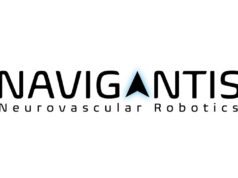A new US study looking at the safety and effectiveness of new medication developed from adult stem cells for the treatment of ischaemic stroke has opened at University Hospitals (UH) Case Medical Center, Cleveland, USA. The phase 2 study will use a cell therapy product called MultiStem (Athersys).
MultiStem is a proprietary medication made from a patented class of early adult stem cells called Multipotent Adult Progenitor Cells or MAPCs that are obtained from the bone marrow. Hundreds of thousands to millions of doses can be made from the bone marrow cells of one donor. The cells do not come from the patient, so can be made in advance, stored in the hospital and be used off the shelf.
Cathy Sila, principal investigator of the study, director of the Stroke and Cerebrovascular Center at UH Case Medical Center, and professor of Neurology at Case Western Reserve University, said that the objectives of the study are to determine the highest well-tolerated and safest single dose of MultiStem in patients with ischaemic stroke and to determine the efficacy of MultiStem on functional outcome in ischaemic stroke patients.
“Current therapy for stroke is unfortunately very limited. There is only one drug, tPA, that is approved for use in patients with acute ischaemic stroke, and tPA needs to be administered within hours of the onset of the stroke,” said Sila.
“Despite public education and the development of stroke centres, only about 4% of all ischaemic stroke patients presenting to the hospital within 24 hours of their symptoms are eligible for tPA therapy. We need to develop new drugs and biologic treatments to effectively treat ischaemic stroke and the damage resulting from the stroke in a wider time window so more patients can be eligible for treatment.”
“Unlike conventional drugs, we believe that MultiStem therapy provides benefit in multiple ways when administered after an acute ischaemic stroke,” said Robert W Mays, head of Neuroscience at Athersys. “From our preclinical work, MultiStem cells appear to reduce the local inflammatory response and protect neurons in the brain, while modulating the body’s general immune response and inflammation which leads to additional damage to the brain in the days immediately following the stroke. This is an entirely new concept for how cell therapies may provide benefit following CNS injury, and we are very excited by the potential of MultiStem therapy to treat stroke,” said Mays.
“We are trying to improve the functional outcome after a stroke,” said Sila. If MultiStem therapy ultimately proves to be effective when given at 24-36 hours after the stroke, it could mean that the majority of stroke victims would be eligible for treatment.”
The national study will involve approximately 25 sites with the goal of enrolling 140 patients. It will be double-blind, randomised, placebo-controlled. The study is funded by Athersys.












